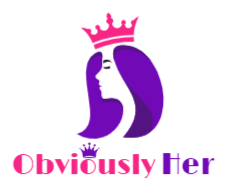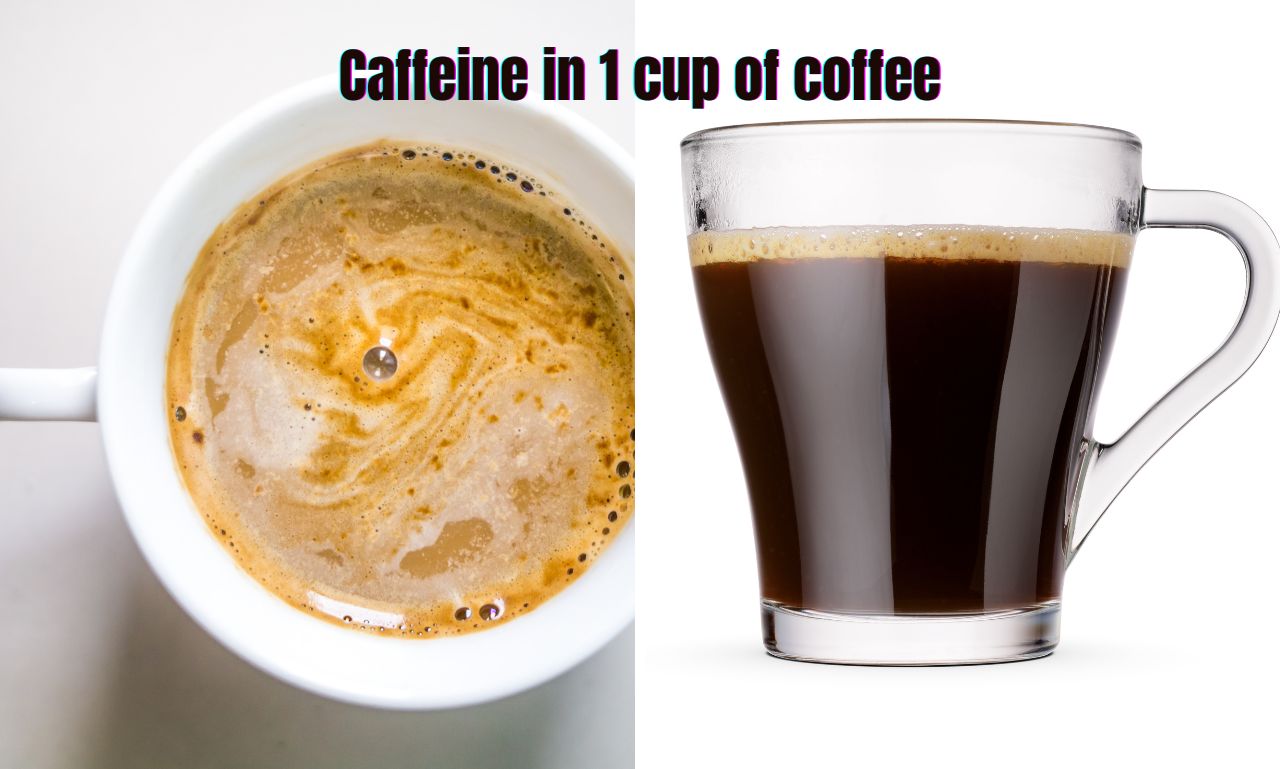Caffeine in 1 cup of coffee ranges from 70 to 140 milligrams. The amount depends on the type and brewing method.
Coffee is a popular beverage enjoyed worldwide. It provides an energy boost and enhances mental alertness. The caffeine content varies based on several factors. Different types of coffee beans and brewing methods influence the caffeine levels. For instance, espresso typically has more caffeine per ounce than drip coffee.
Understanding these variations can help consumers make informed choices. Those sensitive to caffeine might opt for lighter brews or decaf options. Regular coffee drinkers often develop a tolerance, affecting how caffeine impacts them. Knowing the caffeine content helps manage intake and maintain a balanced lifestyle.
Caffeine Content In Your Cup
Understanding the caffeine content in your coffee can help you manage your daily intake. Whether you need a morning boost or an afternoon pick-me-up, knowing how much caffeine is in your cup is essential.
Average Amounts
The caffeine content in one cup of coffee can vary widely. On average, an 8-ounce cup of brewed coffee contains about 95 milligrams of caffeine. Here’s a quick breakdown:
| Type of Coffee | Caffeine Content (mg) |
|---|---|
| Brewed Coffee | 95 |
| Espresso (1 oz) | 63 |
| Instant Coffee | 62 |
| Decaf Coffee | 2 |
Factors Affecting Caffeine Levels
Several factors can influence the caffeine content in your coffee. Here are some key factors:
- Type of Coffee Bean: Arabica beans have less caffeine than Robusta beans.
- Brewing Method: Different methods extract varying amounts of caffeine. For example, espresso has more caffeine per ounce than drip coffee.
- Serving Size: Larger servings contain more caffeine. A 16-ounce cup has double the caffeine of an 8-ounce cup.
- Roast Level: Darker roasts have slightly less caffeine than lighter roasts.
- Ground Size: Finer grounds extract more caffeine during brewing.
Understanding these factors can help you choose the coffee that best suits your needs. Whether you prefer a strong espresso or a mild decaf, knowing the caffeine content can make your coffee experience more enjoyable.

Credit: www.foodnetwork.com
The Science Behind The Buzz
Caffeine is the world’s most popular stimulant. Millions of people consume it daily. A single cup of coffee can boost your energy. But how does it work? Let’s explore the science behind caffeine and its effects.
How Caffeine Works
Caffeine acts on the brain. It blocks adenosine, a chemical that makes you feel tired. By doing so, it keeps you alert and awake. This process starts quickly after you drink coffee.
Here’s a simple breakdown:
- Caffeine enters your bloodstream.
- It travels to your brain.
- It blocks adenosine receptors.
- Neurons fire more rapidly.
- You feel more awake and alert.
Immediate Effects On The Body
The effects of caffeine are almost immediate. Within 15 minutes, you can feel more energized. The caffeine boosts dopamine production. This makes you feel happier and more motivated.
Here is what happens to your body:
| Effect | Time After Ingestion |
|---|---|
| Increased Heart Rate | 15-30 minutes |
| Improved Focus | 15-30 minutes |
| Boosted Energy Levels | 30-60 minutes |
These effects usually last for a few hours. After that, caffeine’s influence starts to wear off.
Health Implications Of Caffeine
The caffeine in one cup of coffee can have significant health implications. Understanding these effects is crucial for making informed choices. Let’s explore the benefits and risks of caffeine consumption.
Benefits Of Moderate Consumption
Moderate caffeine intake offers several health benefits. It can improve mental alertness and concentration. Many people use it to stay awake and focused.
Caffeine also boosts metabolic rate. This can aid in weight loss and fat burning. Studies show that it may enhance physical performance. Athletes often use caffeine to improve endurance.
Another benefit is its potential to reduce the risk of certain diseases. Moderate coffee drinkers have a lower risk of Parkinson’s disease. Some research suggests it may protect against Alzheimer’s disease.
Moderate caffeine consumption can also improve mood. It stimulates the release of dopamine, the “feel-good” neurotransmitter.
Risks Of Overconsumption
While caffeine has benefits, overconsumption poses risks. High doses can lead to insomnia. This affects your sleep quality and overall health.
Excessive caffeine can cause anxiety and nervousness. It increases heart rate and blood pressure. Long-term overuse may lead to heart issues.
Overconsumption can also result in digestive problems. Some people experience stomach upset or acid reflux.
It is important to note that caffeine is addictive. Dependence can develop, leading to withdrawal symptoms like headaches and irritability.
| Moderate Consumption | Overconsumption |
|---|---|
| Improves alertness | Causes insomnia |
| Boosts metabolism | Increases anxiety |
| Enhances physical performance | Raises heart rate |
| May reduce disease risk | Leads to digestive issues |
| Improves mood | Can cause addiction |
Comparing Coffee To Other Caffeinated Drinks
Coffee is a popular choice for a caffeine boost, but how does it compare to other drinks? This section examines how tea, energy drinks, and soda stack up against coffee in terms of caffeine content.
Tea Vs. Coffee
Tea and coffee are both enjoyed worldwide for their caffeine content. But the caffeine levels vary.
| Beverage | Caffeine Content (mg) |
|---|---|
| Black Tea | 40-70 mg |
| Green Tea | 20-45 mg |
| 1 Cup of Coffee | 95 mg |
Black tea has about 40-70 mg of caffeine per cup. Green tea contains 20-45 mg of caffeine. Coffee has 95 mg of caffeine per cup. Coffee generally has more caffeine than tea.
Energy Drinks And Soda
Energy drinks and sodas also provide a caffeine kick. But they vary widely in content.
| Beverage | Caffeine Content (mg) |
|---|---|
| Energy Drink (8 oz) | 70-100 mg |
| Cola (12 oz) | 30-40 mg |
| 1 Cup of Coffee | 95 mg |
An 8 oz energy drink usually has 70-100 mg of caffeine. A 12 oz cola contains 30-40 mg of caffeine. Coffee has 95 mg of caffeine per cup. Coffee often has more caffeine than most sodas.
Decoding The Myths
Caffeine in a cup of coffee is often misunderstood. Many myths surround its effects and consumption. Let’s decode some of these myths to get a clearer picture.
Debunking Common Misconceptions
Many believe that a cup of coffee has the same amount of caffeine. This is not true. The caffeine content can vary based on the type of coffee bean and brewing method. For instance, a typical cup of brewed coffee might have about 95 mg of caffeine. But, this can range from 70 to 140 mg.
Another common myth is that decaffeinated coffee has no caffeine. This is false. Decaf coffee still contains a small amount of caffeine. A cup of decaf coffee can have about 2 to 5 mg of caffeine.
Some think that espresso has the most caffeine. This is misleading. While espresso has more caffeine per ounce, people usually drink it in smaller quantities. A single shot of espresso has about 63 mg of caffeine. This is less than a full cup of brewed coffee.
Caffeine Sensitivity Reality
Not everyone reacts to caffeine the same way. Some people are more sensitive to its effects. For these individuals, even a small amount of caffeine can cause jitteriness or insomnia.
Others can consume large amounts without any issues. Sensitivity to caffeine is influenced by genetics and lifestyle. Certain medications and health conditions can also affect how your body processes caffeine.
It’s essential to understand your own body’s response to caffeine. This way, you can enjoy your coffee without any negative side effects.
| Coffee Type | Average Caffeine Content (mg) |
|---|---|
| Brewed Coffee (8 oz) | 95 |
| Decaf Coffee (8 oz) | 2-5 |
| Espresso (1 oz) | 63 |
Optimizing Your Coffee Experience
Optimizing your coffee experience starts with understanding the caffeine content in one cup of coffee. Knowing how to choose the right beans and the best brewing methods can make a huge difference. Below, we explore the key aspects to enhance your coffee journey.
Choosing The Right Beans
The type of coffee beans you use affects the caffeine content. Arabica beans usually have less caffeine than Robusta beans. Arabica beans offer a smoother taste and are less bitter. Robusta beans provide a stronger flavor and more caffeine.
Here’s a simple comparison:
| Bean Type | Caffeine Content (per 100g) | Flavor Profile |
|---|---|---|
| Arabica | 1.2g | Smooth, mild |
| Robusta | 2.2g | Strong, bitter |
For a mild coffee with less caffeine, choose Arabica beans. For a stronger kick, go for Robusta beans.
Brewing Methods Matter
The way you brew your coffee also influences the caffeine content. Different brewing methods extract caffeine differently.
- Espresso: Quick brewing, high pressure, higher caffeine content.
- Drip Coffee: Medium grind, longer brew time, balanced caffeine.
- French Press: Coarse grind, longer steeping, rich flavor.
- Cold Brew: Coarse grind, steeped in cold water, smooth and less acidic.
Each method has its unique flavor and caffeine level. Choose the method that suits your taste and caffeine needs.
Here is a quick guide:
| Brewing Method | Average Caffeine (per 8 oz) |
|---|---|
| Espresso | 63 mg |
| Drip Coffee | 95 mg |
| French Press | 80 mg |
| Cold Brew | 100 mg |
Optimizing your coffee experience involves selecting the right beans and the best brewing method. Enjoy your perfect cup of coffee!
The Cultural Significance Of Coffee
Coffee is more than just a drink. It is an essential part of many cultures around the world. For some, it is a morning ritual. For others, it is a social activity. Understanding the cultural significance of coffee can deepen our appreciation for this beloved beverage.
Coffee In Social Settings
Coffee plays a crucial role in social interactions. Friends often meet for coffee to catch up. Business meetings frequently take place over a cup of coffee. In many cultures, offering coffee to guests is a sign of hospitality.
In Italy, coffee bars are social hubs. People gather to chat and enjoy espresso. In Turkey, coffee houses are places for conversation and relaxation. Coffee breaks in workplaces foster camaraderie among colleagues.
Global Coffee Trends
Coffee trends vary around the world. Each country has its unique way of enjoying coffee. In the United States, iced coffee is popular. In Japan, canned coffee is available in vending machines. In Ethiopia, coffee ceremonies are a traditional practice.
Here’s a table showing different coffee trends globally:
| Country | Popular Coffee Trend |
|---|---|
| Italy | Espresso |
| United States | Iced Coffee |
| Japan | Canned Coffee |
| Ethiopia | Coffee Ceremonies |
The way people enjoy coffee reflects their culture. These trends show the diversity in coffee consumption around the world.

Credit: prestocoffee.com
Navigating The World Of Decaf
Decaf coffee offers a great alternative for those sensitive to caffeine. It allows you to enjoy the rich flavors of coffee without the jitters. This section will guide you through the decaf journey.
How Decaf Is Made
Decaf coffee goes through a special process to remove most of its caffeine. There are several methods used for this:
- Swiss Water Process: This method uses water to remove caffeine. It is chemical-free and preserves the coffee’s flavor.
- Direct Solvent Process: This method uses chemicals like methylene chloride or ethyl acetate. It is quick and effective.
- Carbon Dioxide Process: This method uses carbon dioxide under high pressure. It is efficient and retains the coffee’s taste.
The choice of method affects the taste and quality of the decaf coffee. Each method aims to keep as much flavor as possible.
Comparing Caffeine Content
Regular coffee and decaf coffee have different caffeine levels. Here is a simple comparison:
| Coffee Type | Average Caffeine (mg) |
|---|---|
| Regular Coffee | 95 mg |
| Decaf Coffee | 2-5 mg |
As you can see, decaf coffee has much less caffeine. This makes it a good choice for those avoiding caffeine. Enjoy the taste of coffee without the side effects.
Understanding these differences helps you make an informed choice. Whether you love the bold taste or seek a milder brew, decaf coffee has something for everyone.
:max_bytes(150000):strip_icc()/Partners-Coffee-FT-BLOG0523-7aca9e770bc84d3faa004c2bb6099749.jpg)
Credit: www.foodandwine.com
Frequently Asked Questions for Caffeine in 1 cup of coffee
Is 200 Mg Of Caffeine A Lot?
200 mg of caffeine is moderate for most adults. It equals about two cups of coffee. Always consider personal tolerance.
How Much Caffeine Is In A 12 Oz Cup Of Brewed Coffee?
A 12 oz cup of brewed coffee typically contains about 95 milligrams of caffeine. This amount can vary slightly.
How Much Caffeine Is In A Typical Cup Of Coffee?
A typical cup of coffee contains 95 milligrams of caffeine. This amount can vary based on brewing method and coffee type.
Is 300 Mg Of Caffeine A Lot?
Yes, 300 mg of caffeine is a moderate amount. It’s generally safe for most adults but can cause side effects.
How Much Caffeine In A Cup Of Coffee?
A standard 8-ounce cup contains about 95 mg of caffeine.
Is Caffeine Content Same In All Coffees?
No, it varies by type, brewing method, and brand.
Does Brewing Time Affect Caffeine Levels?
Yes, longer brewing times increase caffeine content.
Which Coffee Has The Most Caffeine?
Espresso has the highest caffeine concentration per ounce.
How Does Decaf Coffee Compare In Caffeine?
Decaf still contains some caffeine, about 2-5 mg per cup.
Can Coffee Strength Affect Caffeine Content?
Yes, stronger coffee generally has more caffeine.
Conclusion of Caffeine in 1 cup of coffee
Understanding the caffeine content in a cup of coffee helps make informed choices. This knowledge can improve your daily routine. Opt for the right amount to match your needs. Enjoy your coffee while staying aware of its effects. Make smarter choices and savor every sip responsibly.
Please visit our other website to see/buy women best products.




